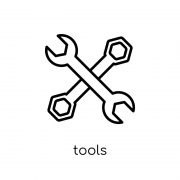Should You Use a Self-Directed IRA if You Already Have Other Retirement Accounts?
Holding a Self-Directed IRA can be a fantastic way to diversify your retirement assets. But when do you know you need one—and when might an IRA interfere? To make sure your IRA plans do not interfere with your goals for retirement, here are a few key points to understand:
Determining Your Self-Directed IRA Goals
First things first: why are you considering a Self-Directed IRA? The reasons are myriad, but for most people, an alternate retirement investment strategy usually begins with the desire to reach one of these goals:
- Diversification of asset classes. Diversifying assets is one thing—it’s not hard to buy a broad stock market fund that includes lots of different stocks. But a Self-Directed IRA allows you to diversify across asset classes, which means expanding beyond stocks and into alternative investments like real estate, tax liens, private lending, and precious metals including gold and silver.
- Generating cash flow through real estate. One of the most popular ways to invest for retirement is to invest in real estate. Using a Self-Directed IRA, you can hold real estate within your retirement account, which in turn lets a property manager collect rent directly into the account. This helps you establish a cash flow that doesn’t depend on the stock market’s ups and downs.
- Adding stability to a wild portfolio. If your portfolio is too “wild,” diversification can help. But the assets you use will also play a major role. For example, a precious metal IRA such as a Self-Directed Gold IRA allows you to add gold to your retirement funds, enhancing its stability and lowering your overall risk.
If any of the above sound like something you want to accomplish with your IRA, then you know that you might want to use one. But what if you already have other retirement accounts?
What to Do if You Already Have Retirement Accounts
You might look at a previously existing 401(k) or a Roth IRA and wonder: what’s so great about a Self-Directed IRA that you should immediately change accounts?
First off, keep in mind that retirement strategy is not a one-size-fits-all proposition. Your current retirement holdings will have an effect on the decisions you make when it comes to Self-Directed IRAs in the future.
But here are some keys that you will want to keep in mind as you make your decision on what to do with a Self-Directed IRA moving forward:
- Contribution limits are a tally of your accounts, not on a per-account basis. For example, you might think it a good strategy to contribute $6,000 to a Roth IRA and $6,000 to a Self-Directed Traditional IRA. But IRS rules forbid this, instead noting that contribution limits are for all accounts of that type. In this case, both Roth IRAs and Traditional IRAs would fall under those contribution limits, which means you cannot simply expand your contribution limits by adding more accounts. This is why one or two accounts will work just fine for most people.
- Think about the tax implications. Let’s say you already have a Roth IRA, but you want a Self-Directed IRA that can help you with tax savings. Then it might be a good idea to use a Self-Directed Solo 401(k), if you are eligible, as the contributions to a Solo 401(k) will be tax-deductible. This is an example where using a self-directed retirement account can both expand and diversify your current holdings and contribution limits.
Interested in learning more about Self-Directed IRAs? Contact American IRA, LLC at 866-7500-IRA (472) for a free consultation. Download our free guides or visit us online at www.AmericanIRA.com.







